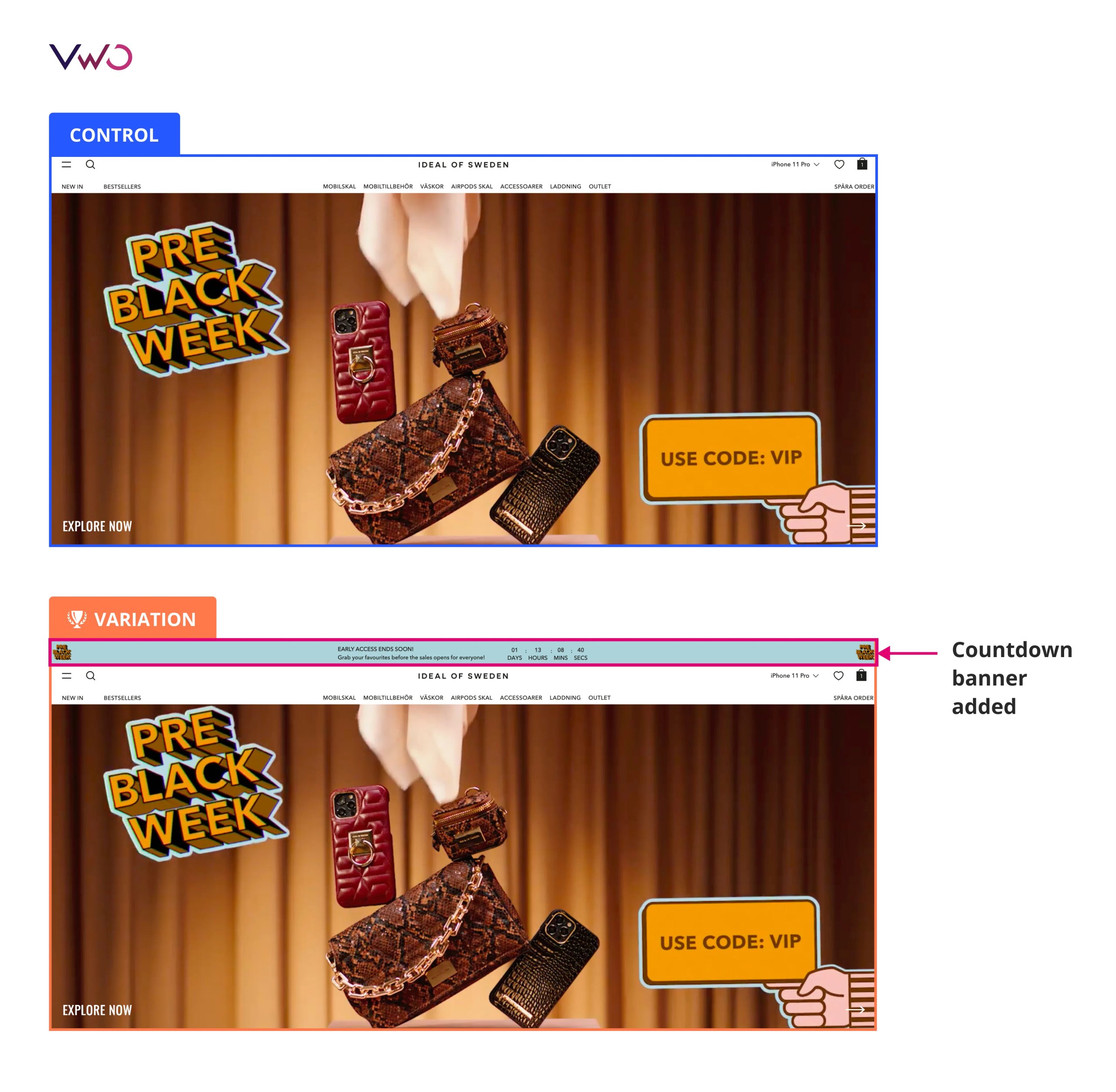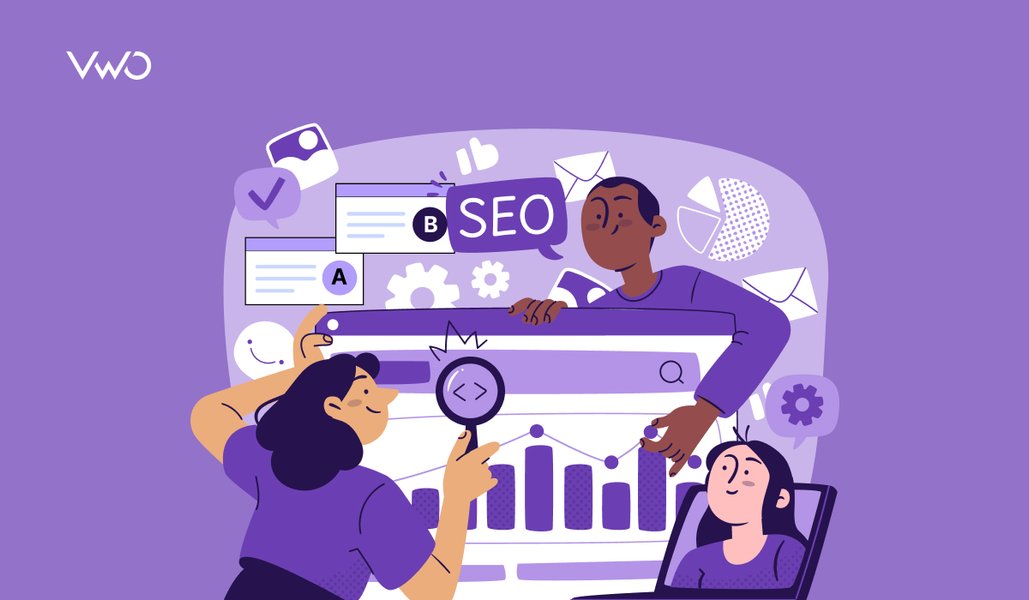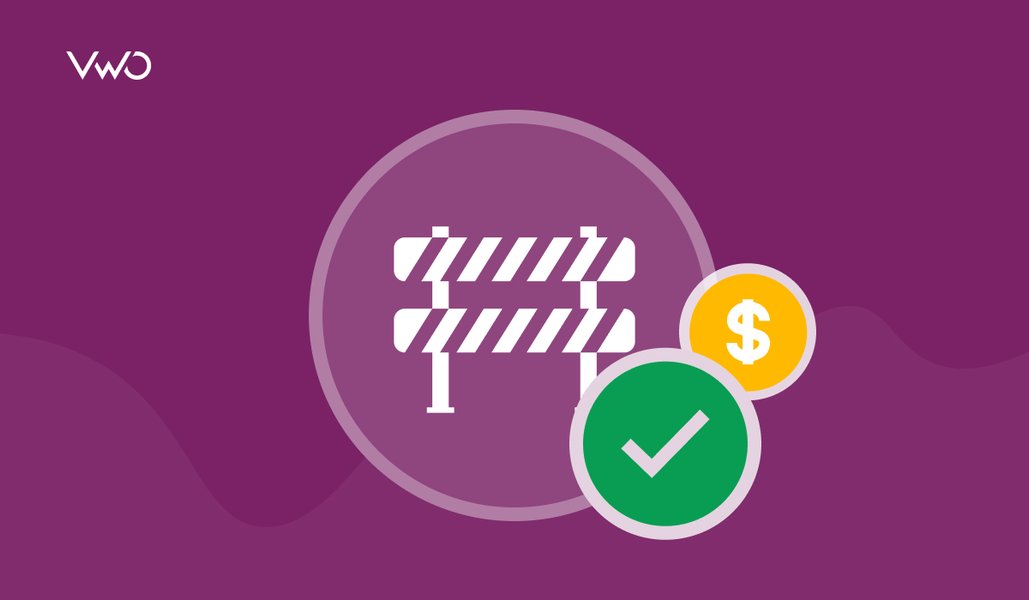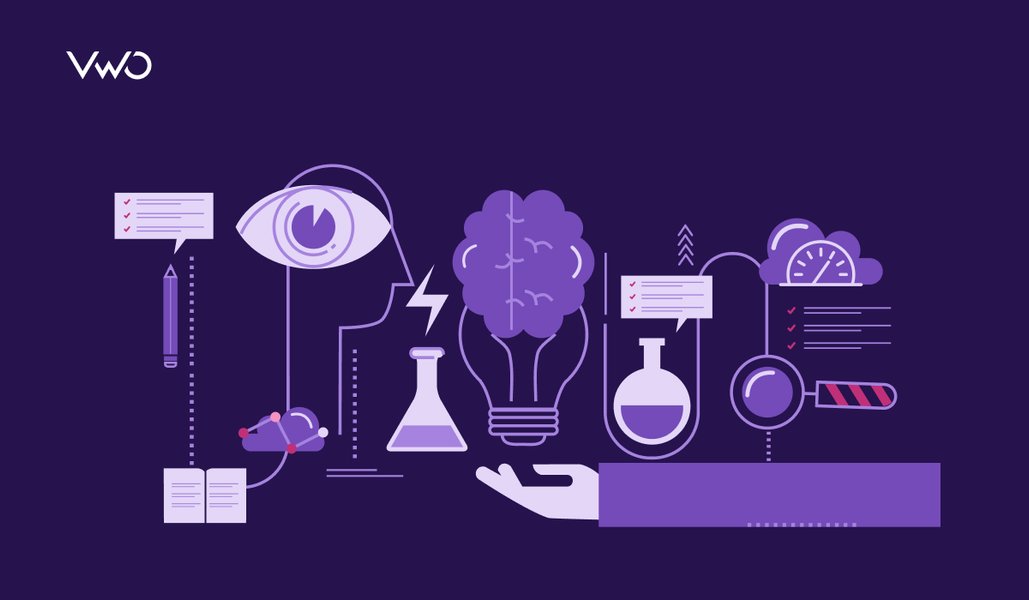It’s mid-December. Your online store gets 3x the traffic it normally does. But something unexpected happens: your conversion rate drops. Why? Customers land on a product page, spend 12 minutes reading reviews and checking sizing, proceed to checkout, see “Delivery in 5-7 business days,” and leave. Everyone needs it by December 20.
You own a SaaS website. Traffic spikes, but the conversion story is the same as that of the online store. Why? Customers start the free trial for your project management software, but quit after day three because the setup feels too complicated before the holidays slow down.
The pattern is consistent across industries: holiday traffic surges, but customer demands and anxiety spike too. People move faster, but they also hesitate more. That’s where experimentation becomes your secret weapon.
We’ve highlighted five industries where seasonal testing creates immediate, measurable impact.

Retail and eCommerce: turn holiday shopping anxiety into conversions
Delivery promise messaging
Test this:
- Move shipping promises above the fold: “Arrives by December 22” in bold, red text
- Add countdown timers that refresh as the order approaches the cutoff
- Test different deadline dates to find your conversion sweet spot
Amazon uses delivery date urgency: The Amazon website showcases delivery dates and “Get it by” messaging prominently above product details.
Join veteran experimenters in our practical webinar on Maximizing Revenue with A/B Testing During Black Friday & Cyber Monday to learn strategies for setting up high-stakes tests during peak periods, interpreting results accurately, and avoiding common pitfalls that can jeopardize revenue.

Create urgency with countdown timers
Urgency works during sales events, but only if you show real scarcity and time constraints.
Test this:
- Test sticky countdown banners: “Only 3 days left for Black Friday prices”
- Test placement changes: Header vs. floating bar vs. inline
- Test messaging: Discount-focused vs. scarcity-focused vs. inventory-focused
Real-world result: Using VWO, IDEAL OF SWEDEN tested a sticky countdown banner during their Black Month campaign and achieved a 5.6% uplift in add-to-cart clicks across all pages. The banner appeared during Singles Day, VIP access, Black Week, and Cyber Monday. Different regions and product categories responded at different intensities, proving that countdown urgency works but needs segmentation to optimize further.

Use VWO Editor’s Countdown Timer widget to add urgency without code. Simply choose your layout, set custom start and end times, and configure what happens when time runs out. You can trigger the timer on page load or when users show exit intent for maximum impact.
Gift bundles and curation
Test this:
- Create curated bundles with lifestyle-focused names
- Test bundle pricing against individual item pricing
- Measure whether customers spend more on bundles overall
How Sephora organizes gift solutions: Check Sephora’s gift sets page to see bundles organized by recipient type with bundled pricing displayed clearly.

Make key CTAs impossible to miss
Sometimes the problem isn’t messaging. It’s visibility.
Test this:
- Test subtle animation on important elements (login icon, account link)
- Test color contrast changes for CTAs
- Test badge notifications with animation vs. static badges
Real-world result: DeFacto, a Turkish fashion brand, observed during Black Friday that many users intended to register or log in but simply didn’t notice the easy way to do it. Using VWO, they tested a persistent notification badge with animation on the user icon (instead of static icons) and achieved a 21.53% increase in user logins and an 8.55% increase in registrations.
The learning: subtle visual prompts can nudge users toward conversion when they’re already intending to act.

Nonprofit and fundraising: test year-end giving at scale
Testing impact clarity with specific dollar anchors
Donors want to know exactly what their money does.
Test this:
- Test specific outcomes: “Your $100 gift funds 3 meals and shelter for one family for a week”
- Test outcome-first framing: “Provide 12 meals” vs. “Donate $50”
- Test multiple anchor points ($25, $50, $100) to find which drives higher donations
How Charity: Water frames donation impact: Charity: Water’s donation page shows what different amounts fund (e.g., “Build a well for $500”).

Matching campaigns with countdown timers
Recurring donors are more valuable, but so are matched donations during limited windows.
Test this:
- Test “Your monthly gift will be matched” to drive recurring donations
How Doctors Without Borders enables recurring giving: Doctors Without Borders’ donation page offers both one-time and monthly giving options with easy switching between formats.

SaaS and subscriptions: capture Q1 budget allocation
Annual billing tied to specific business outcomes
Buyers are thinking about budgets and ROI, not just price.
Test this:
- Frame annual pricing with outcomes: “Commit for a year and lock in your 2025 ROI guarantee”
- Test outcome anchors: “Save 200 hours annually” vs. discount messaging
- Compare outcome-based vs. discount-based annual offers
How Slack positions annual billing: Slack’s pricing page shows annual vs. monthly options with savings highlighted clearly.

Implementation of fast-track programs for year-end buyers
The real objection isn’t “Does this work?” It’s “I don’t have time to set this up before the new year.”
Test this:
- Offer 7-day trials with guaranteed implementation calls
- Test “Launch by January 15” messaging
- Measure completion rates for fast-track vs. standard trials
Travel and hospitality: build confidence in holiday bookings
Flexible cancellation with rescheduling credits
Cancellation policies shouldn’t be buried in footnotes.
Test this:
- Test flexible cancellation: “Free cancellation until December 15”
- Test rescheduling credits: “Cancel free and reschedule for any 2025 date”
- Test insurance framing: “Your trip is protected”
How Booking.com highlights flexibility: Booking.com hotel search results display cancellation terms prominently next to pricing.

Welcome back with personalized offers based on previous searches
Returning visitors are your highest-intent audience. Give them personalized experiences based on what they already searched for.
Test this:
- Show returning customers “Your trips in December 2024 and 2023” with one-click rebook
- Test “You booked Christmas in Cancun last year. Similar dates available nearby?”
- Test personalized discounts: “10% off for annual visitors to your favorite property”
Real-world result: Orascom Hotels Management, a luxury resort company in Egypt, noticed high traffic from returning visitors but only ~4% conversion. Using VWO, they created 13 personalized experiences targeting users who had previously searched specific properties, offering a 40% discount summer promotion tailored to each property.
Result: 60.75% uplift in booking conversion rate, $352,377 in revenue (42% of total), and 873 bookings.
Key insight: Returning visitors respond better to offers targeting their previous property interest rather than generic deals.

Education and online learning: capture New Year goals
Cohort-based enrollment with peer momentum
Generic course copy doesn’t work. Community angles do.
Test this:
- Test cohort framing: “Join 487 others starting January 6. Learn together, stay accountable”
- Test deadline messaging: “Next cohort starts January 13. Limited to 200 students”
- Compare cohort messaging against self-paced messaging for enrollment rates
How Coursera presents course timing: Coursera’s course pages display course duration and learning outcomes prominently, with time-to-completion highlighted.
Early-action pricing with team enrollment
Time-limited offers work better when tied to team commitments.
Test this:
- Test individual early-bird: “Sign up by January 5 and get 30% off”
- Test team pricing: “Enroll 5 colleagues and get 40% off for all”
- Measure individual vs. group enrollment velocity
How Udacity positions pricing incentives: Udacity’s programs page features limited-time offers and payment plans prominently.

How VWO helps teams launch these tests fast
VWO Insights shows where seasonal friction spikes. See heatmaps and session recordings revealing exactly where audiences hesitate.
Segmentation is critical when holidays change who your users are. Separate first-time shoppers from returning customers and test different approaches simultaneously.
Campaign scheduling activates tests at exact moments. Have different versions ready for different dates.
Mutually exclusive groups prevent campaign confusion. Keep visitors part of holiday promotions separate from other campaigns so you measure cleanly.
Auto-deploy accelerates winners during high-traffic periods. Once a test hits statistical significance, the winner automatically replaces the control.
Copilot accelerates testing setup end-to-end. Get AI-powered suggestions on test variations, copy, and implementation. Move from idea to live test in hours.
Discover eCommerce insight generation best practices from VWO experts in our webinar on Creating a Super Holiday Season. Learn how to generate insights from user behavior and use them to plan time-boxed campaigns with proven success rates.
Start testing now
The holiday season isn’t a time to play it safe. Your audience is most engaged and most likely to convert when friction disappears.
Pick one seasonal anxiety from your industry. Design a test that addresses it. Launch it while your audience is active.
Ready to start? Create a free VWO account to build your first seasonal test today, or schedule a demo to explore how segmentation, scheduling, and other VWO capabilities can accelerate your holiday strategy.






















